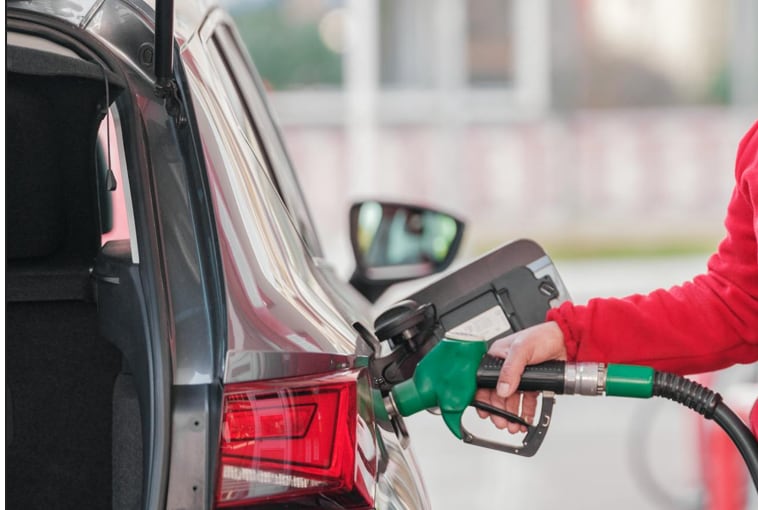
Have you ever been in a rush at the gas station and accidentally grabbed the wrong nozzle? Before you know it, your BMW is filled with regular unleaded instead of the premium fuel it requires. Or maybe you lent your car to a friend and they made this mistake.
It’s a frustrating mistake, but don’t panic! While using the wrong fuel isn’t ideal, there are steps you can take to minimize potential engine damage. This guide will walk you through exactly what to do next if you accidentally put regular gas in your BMW.
Recognizing the Mistake: When Should You Notice?
There are a few key moments when you might realize your BMW has been filled with regular gas instead of premium:
-
Immediately after filling up – You notice the pump label or check your receipt and realize the mistake.
-
When the engine runs rough – You experience misfires, hesitation, or stalling when starting or accelerating.
-
Reduced performance – Your BMW may struggle with power loss, knocking, or pinging due to the lower octane fuel.
The sooner you catch the mistake, the faster you can take corrective action.
Is It Safe to Drive with Regular Gas in a BMW?
The good news is that driving short distances with regular gas is generally safe. However, BMW engines are designed for premium 91+ octane gasoline, and prolonged use of lower octane fuel can lead to engine knock and potential damage over time.
Tips for Safe Driving Until You Reach a Mechanic:
-
Drive under 50 mph to reduce engine strain.
-
Accelerate gently and avoid aggressive throttle input.
-
Keep RPMs under 3000 to minimize engine knock.
-
Use the highest octane available (such as 89) for the next fill-up if premium isn’t an immediate option.
-
Schedule service ASAP to prevent long-term issues.
How to Get to the Nearest BMW Service Center Safely
Once you realize your mistake, your next step should be getting your BMW serviced at our service center near Auburn. Here’s how to drive carefully with the wrong fuel:
-
Stick to lower speeds – High speeds demand more power, increasing the risk of engine knock.
-
Avoid sudden acceleration – Gradual throttle input helps prevent stress on the engine.
-
Keep RPMs low – The higher the revs, the greater the chance of detonation.
-
No spirited driving – Performance will be compromised, so take it easy.
-
Get to a BMW mechanic quickly – The sooner your fuel system is flushed, the better.
How BMW Mechanics Flush the Fuel System
At the service center, technicians will perform a complete fuel system flush, which includes:
-
Draining the fuel tank and lines to remove the incorrect gasoline.
-
Refilling with premium 91+ octane fuel to ensure proper combustion.
-
Adding a detergent fuel injector cleaner to remove any potential buildup.
-
Replacing the fuel filter to eliminate contaminants.
-
Running diagnostics to check for misfires, knocking, or other issues.
This process ensures that all traces of regular gas are removed, minimizing the risk of long-term engine damage.
Using Fuel Additives to Boost Octane
If you can’t get to a service center right away, fuel additives can help:
-
Use an octane booster to temporarily raise the fuel’s octane level.
-
Fill the tank with premium fuel to dilute the regular gas.
-
Follow the manufacturer’s dosage instructions to avoid damage to fuel system components.
While additives are a short-term fix, they are not a replacement for proper service.
When to Expect Engine Issues from Using the Wrong Fuel
Here’s a general timeline of potential engine problems:
-
Immediately: You may experience stalling, rough idle, or difficulty starting.
-
Short Term (Days to Weeks): Reduced power, knocking sounds, or the check engine light may appear.
-
Long Term (Months): If not corrected, prolonged use of regular gas can cause engine wear and damage.
Fortunately, a well-maintained BMW can usually handle a single misfueling incident without severe damage—provided corrective steps are taken quickly.
How Many Times Can You Put Regular Gas in a BMW?
-
Once? Likely no long-term damage, but get it flushed.
-
Two or three times? Performance issues may start showing if not addressed.
-
More than three times? Expect accelerated engine wear, clogged injectors, and power loss.
Repeated use of regular gas significantly increases the risk of engine damage. If you make this mistake, act quickly to minimize harm.
Signs of Engine Damage from the Wrong Gasoline
If your BMW experiences any of the following after using the wrong fuel, have it serviced immediately:
-
Persistent knocking or pinging – A metallic noise indicating pre-ignition issues.
-
Misfires or rough idle – Uneven performance and difficulty starting.
-
Check engine light activation – Indicates fuel or ignition system issues.
-
Failed emissions test – Lower octane fuel can impact emissions system function.
-
Reduced fuel efficiency and power – The car may struggle with acceleration or responsiveness.
Ignoring these warning signs can lead to costly repairs, so take action quickly.
Accidentally filling your BMW with regular gasoline can be stressful, but taking the right steps can prevent serious damage:
-
Drive carefully and get to our BMW serviced center in Columbus for a fuel system flush.
-
Use octane boosters if necessary until the system is cleaned.
-
Monitor your car for performance issues and have them addressed promptly.
-
Avoid repeat mistakes by being mindful at the gas station.
By acting quickly and responsibly, you can get your BMW back on track and running smoothly again. Make an appointment to bring your BMW to have it flushed. Just be extra careful next time at the pump!